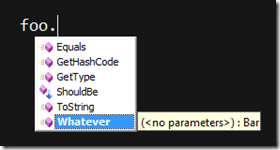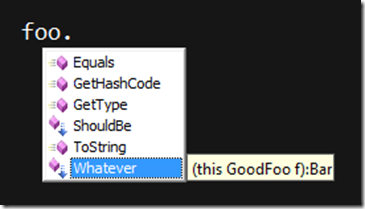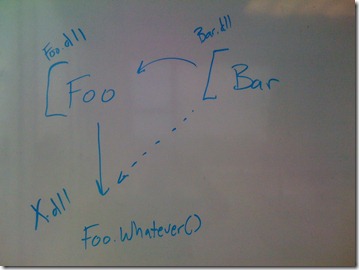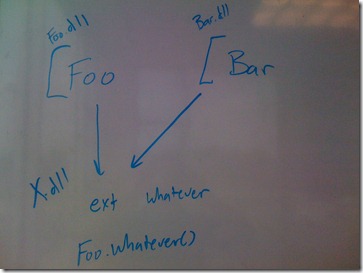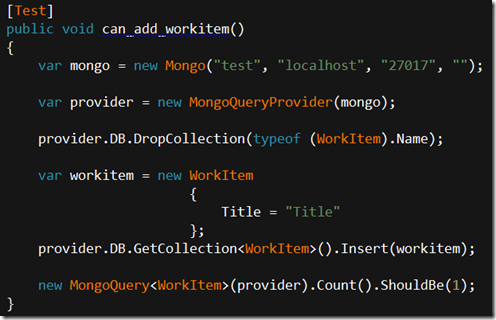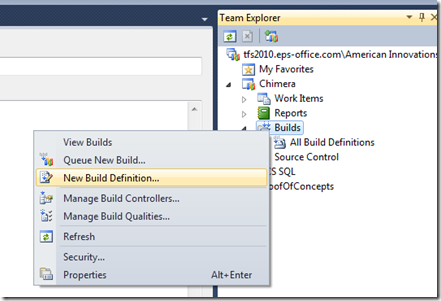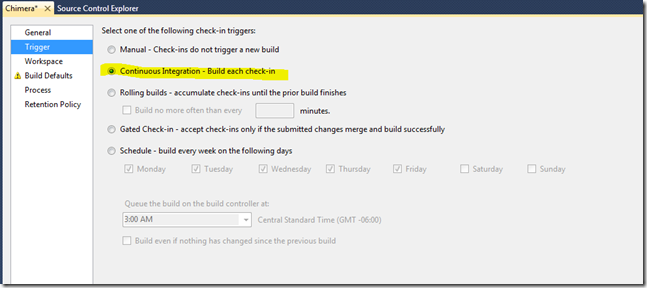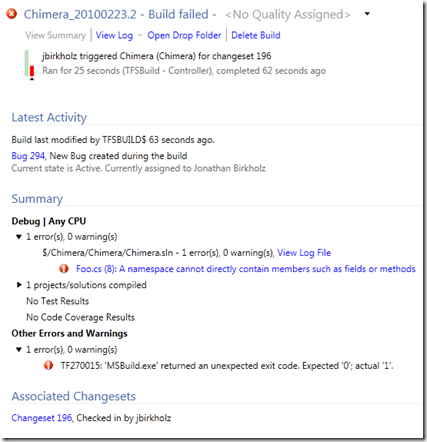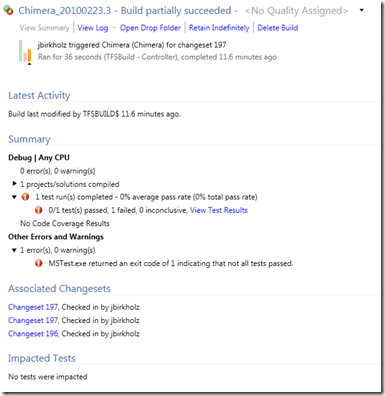As I began preparing for Houston’s Alt .Net’s Open Spaces 2010 Conference (http://altnethouston.com/), I started to reflect on the year since the last Open Spaces. Last year, I had a decision to make: do I go to the already scheduled Nascar weekend with my Godfather’s family or do I attend the inaugural Houston Open Spaces. After lots of time weighing my options, I opted to go to Open Spaces. I am glad I did.
At Open Spaces I got lots of time to meet and interact with some of the greatest minds in .Net. Being able to talk to people like Jeremy Miller and Jeffrey Palermo was invaluable. Numerous sessions introduced me to brand new ways of thinking and solutions to common problems. To say I enjoyed Open Spaces would be an understatement.
But for me, the biggest boon was that I recognized a huge gap in my professional career. Before Open Spaces I didn’t even know who most of the heavy hitters in our professional community even were. Sad? Yes, but true. I decided at Open Spaces to start reaching out and pay more attention to the community. It was time to expand my understanding of the programming world. Also I knew it was time to start blogging more, sharing more, and presenting more.
I think I have a knack for programming and was applying the appropriate principles and patterns; I just had difficulty expressing why I was coding the solution a certain way. I knew I was right but lacked the experience to express why. I remember when Ryan Riley (@panesofglass | http://wizardsofsmart.net/) came over to my computer one day and shared a Hanselminutes podcast featuring Uncle Bob. As I listened I got more and more excited. Uncle Bob was expressing in clear articulate terms exactly the principles I knew and coded by. I knew then that I needed to start learning the appropriate terms, definitions, and principles to express how to produce quality code.
So at Open Spaces when Claudio Lassala (@claudiolassala | http://claudiolassala.spaces.live.com/blog/) mentioned conducting Virtual Brown Bags, I quickly worked to volunteer and share what I was doing. The led to me being the substitute coordinator for several meetings. And now the one year anniversary for Virtual Brown Bags is coming up. What is a VBB?
Check out Claudio on CodeCast: http://www.code-magazine.com/codecast/index.aspx?messageid=d0e149ed-d8e7-44d2-bf7e-94d68ef4c1c3
In short, we meet over Live Meeting every Thursday 12pm-1pm (central) and share whatever we are working on or feel like talking about. :)
Every week I pressure myself to talk and share whatever I am working on. It has been great practice in talking as I code, expressing what and why I am doing something. I also surprised myself that every week I have something to share. I have a hard time sitting down and writing a blog post, but it’s easy for me to plug into Live Meeting and just go over whatever code or blog post has my current attention.
Beyond Virtual Brown Bags, I started to do public presentations at user groups and conferences.
Here is the list of presentations I have done this last year:
WPF Substance over Style - South Harris Dot Net User Group
Evolve Your Code - Houston Tech Fest & C# SIG
INETA recorded this session (http://live.ineta.org/Videos/Player.aspx?video=1ce91b60-5e4b-416d-9cb2-34740fdab8c6)
WPF Input Validation – Houston Tech Fest
WPF in an Hour – EPOG
Silverlight 4 – Aggieland DNUG
I also was able to do a podcast episode on CodeCast talking about Convention over Configuration:
http://www.code-magazine.com/codecast/index.aspx?messageid=0001bf99-1394-45c2-8949-388c673ac7a5
And I volunteered to conduct a free Advanced WPF Workshop.
Also at EPS I presented 2 3-day WPF Training Sessions. Now if that doesn’t challenge you on how long you can talk, then nothing will. :D
As you can see, this was a busy year. Open Spaces allowed me to meet incredibly talented people and engage them in shop talk. It encouraged me to reach out and start mastering my craft, so I can teach others. Open Spaces 2009 was one of the most influential events in my career.
And now we have 2010’s Open Spaces coming up and it should be fantastic!! Not only will I be attending, but I will also be conducting another WPF workshop for Open Spaces 2010. More details will be shared later, but I am very excited about this presentation.
The quality of the discussion and individuals at last year’s conference led to my expansion this last year. I was blessed with so many opportunities to talk, share, and grow. I know that this year’s session will provide me with the fuel to take 2010 to that next level.
I hope to see you all there.


